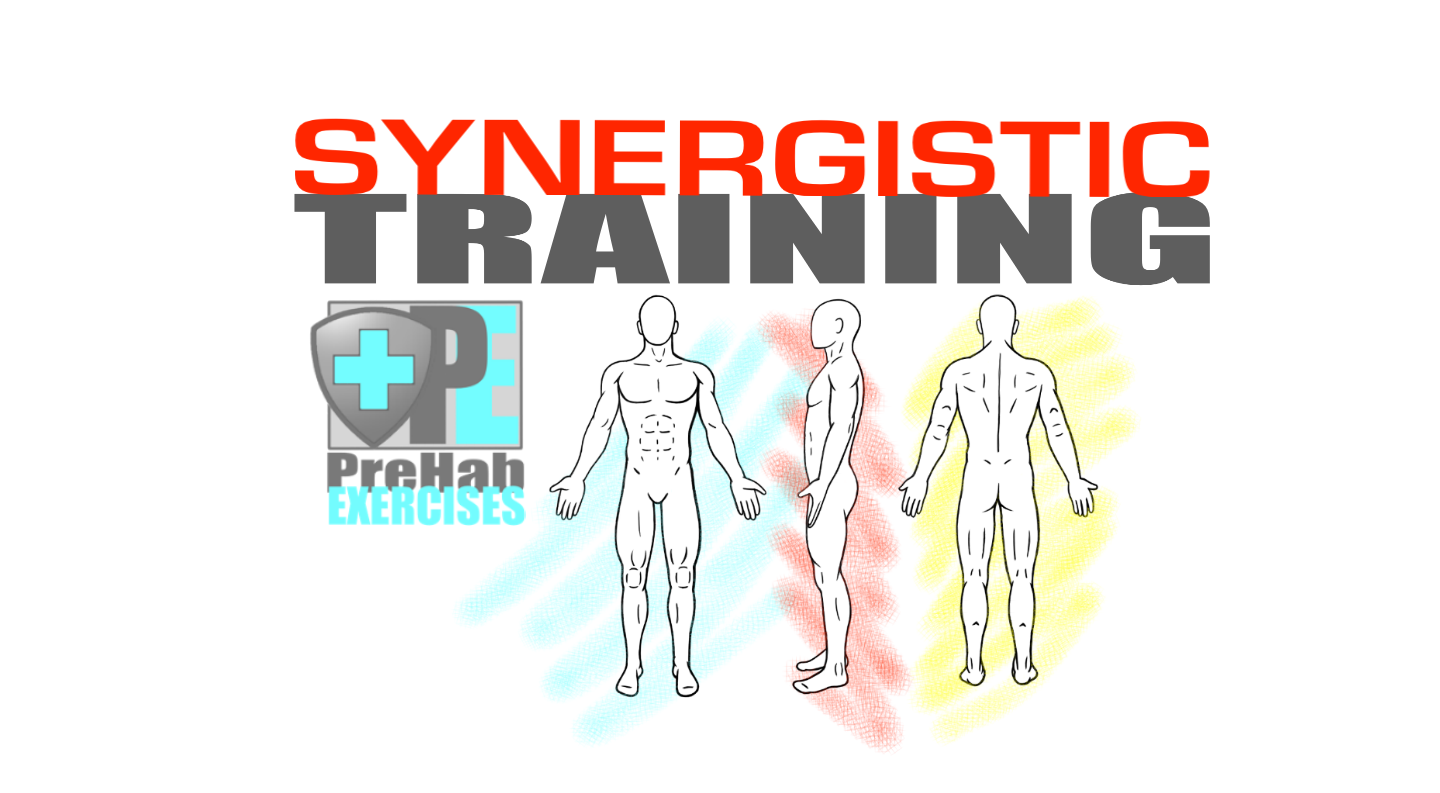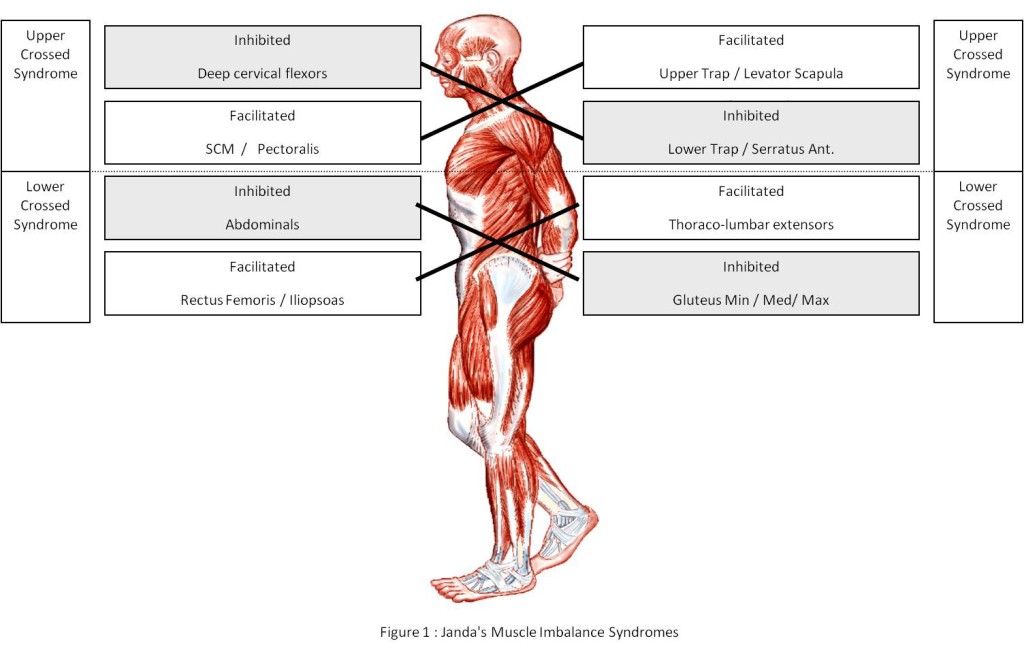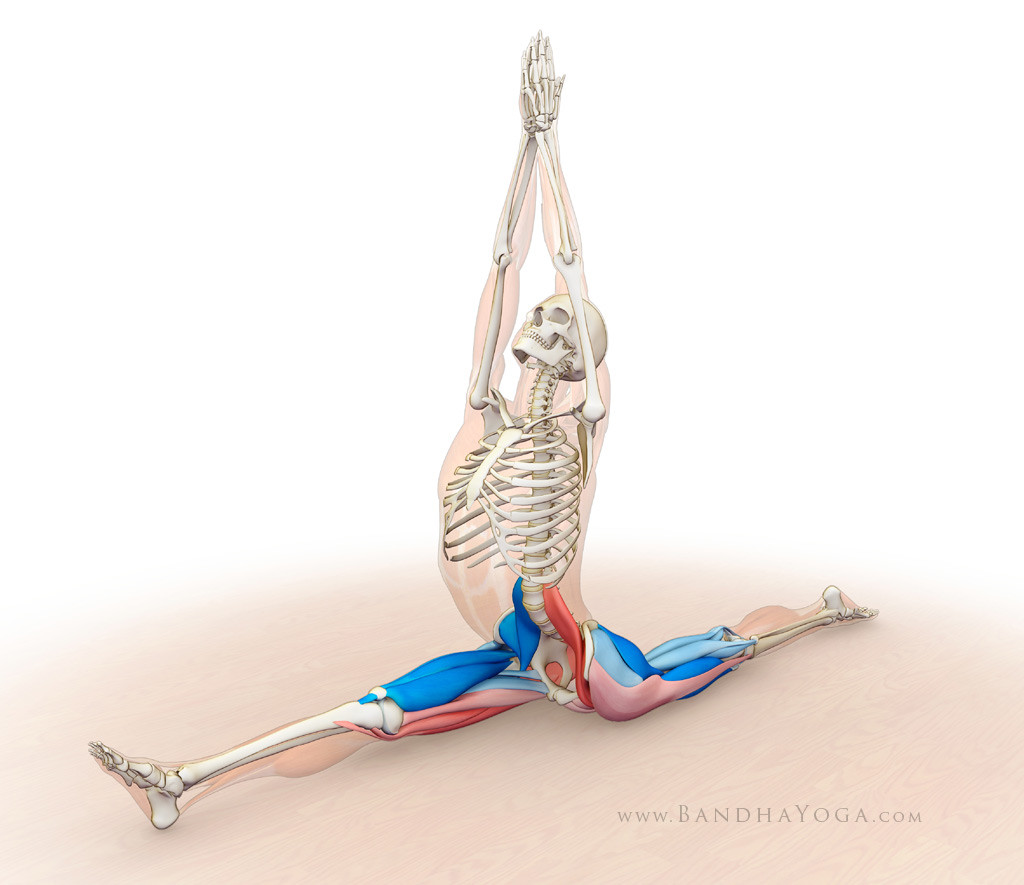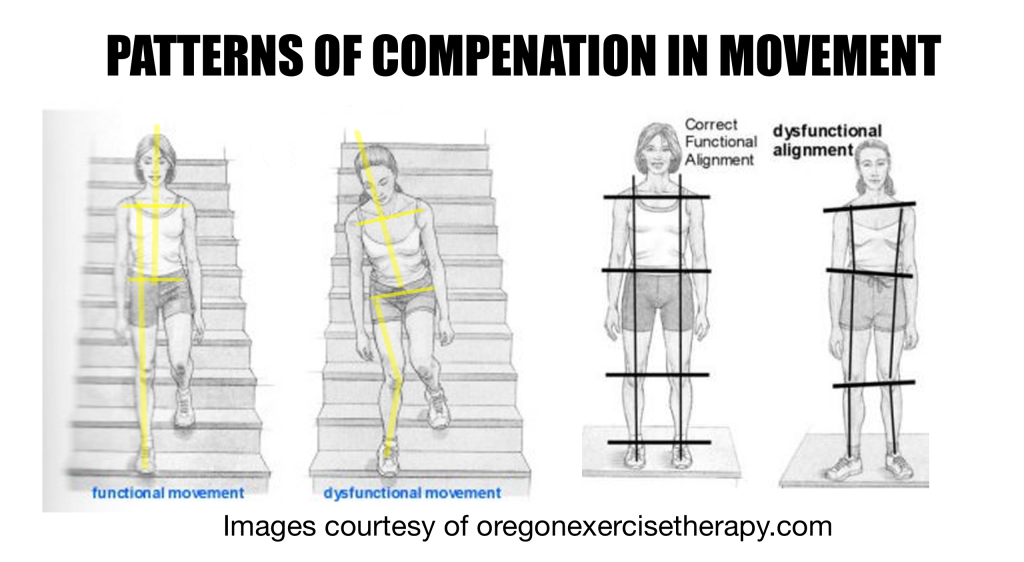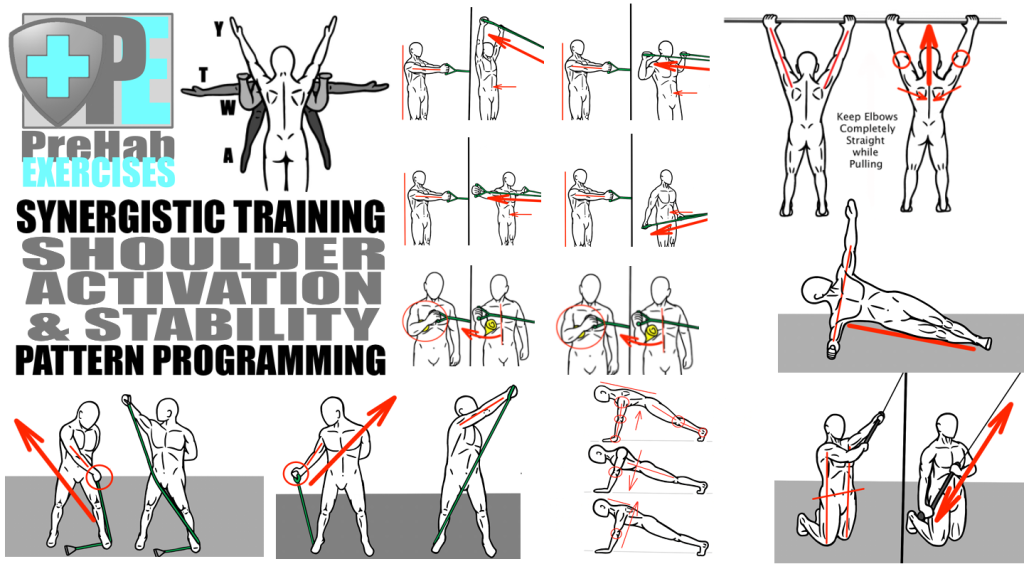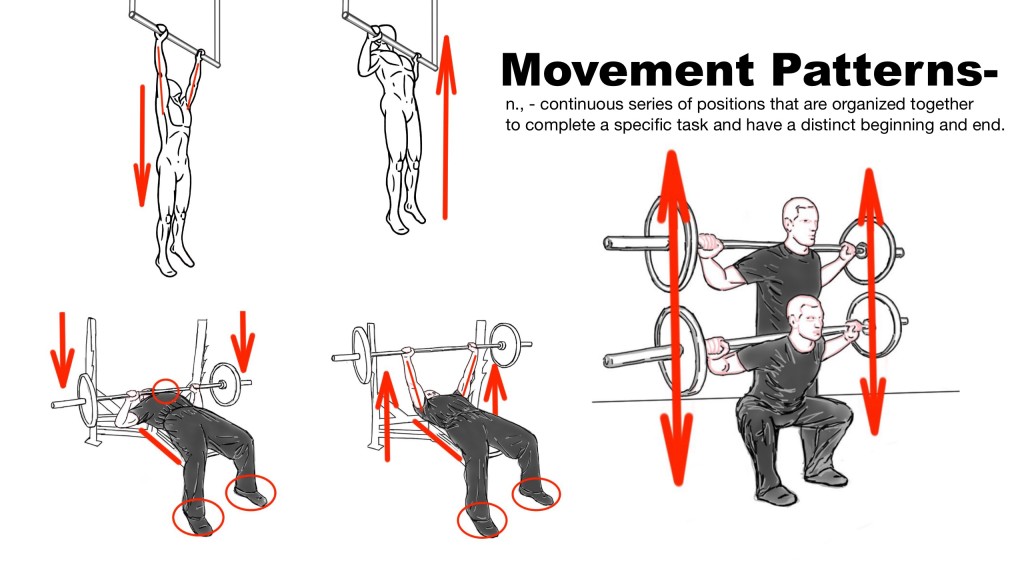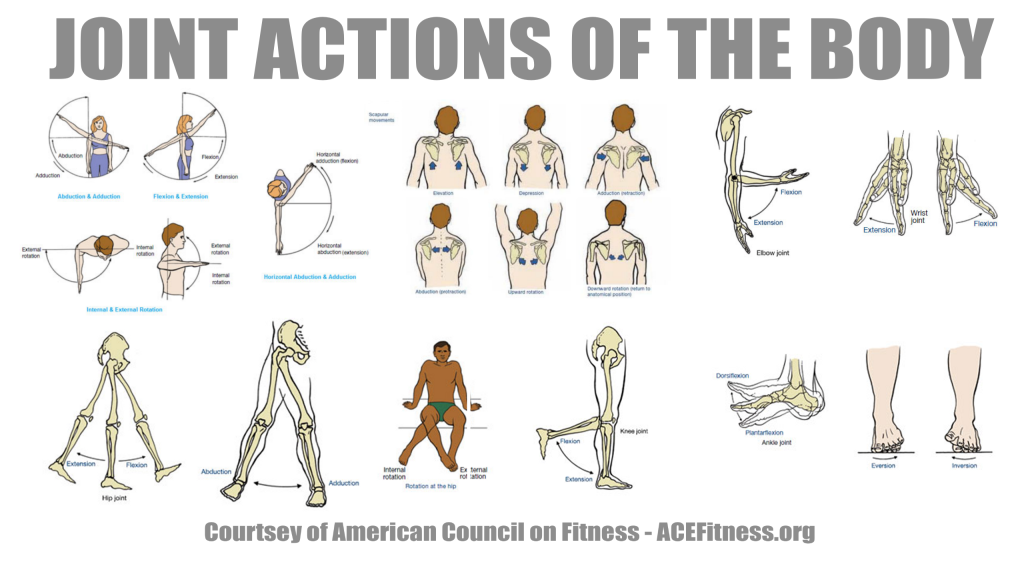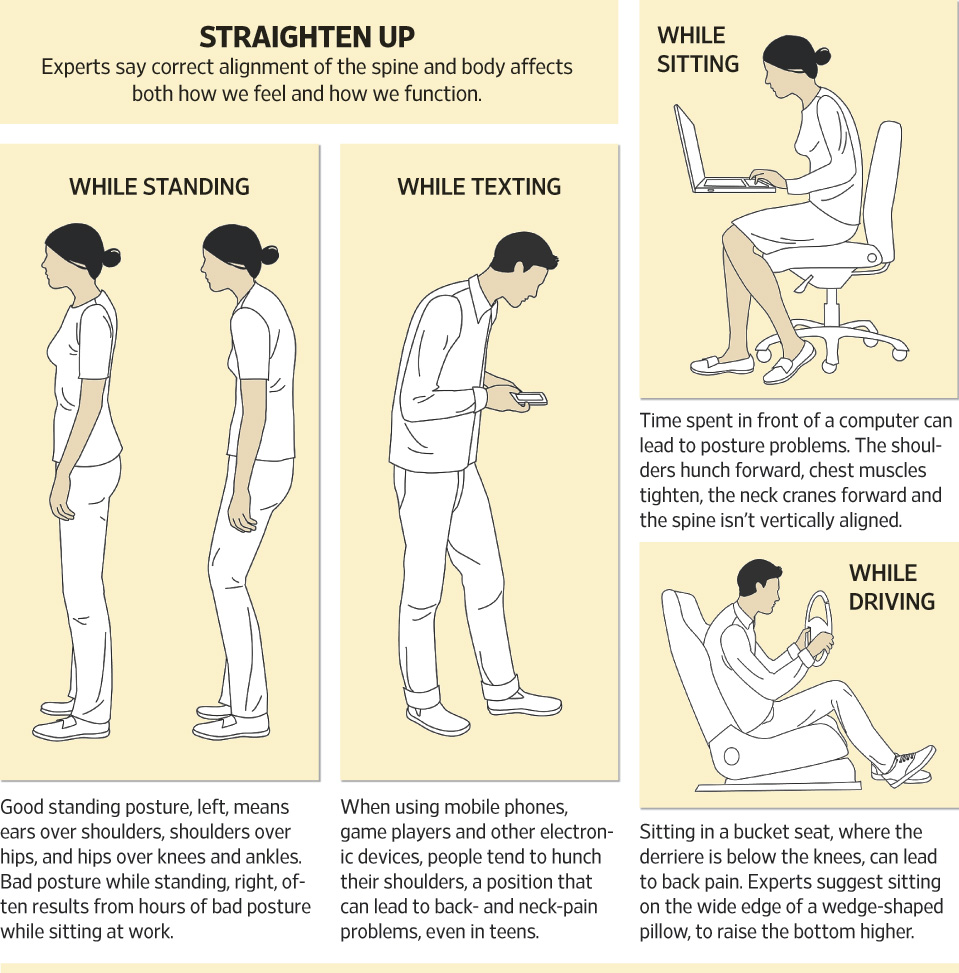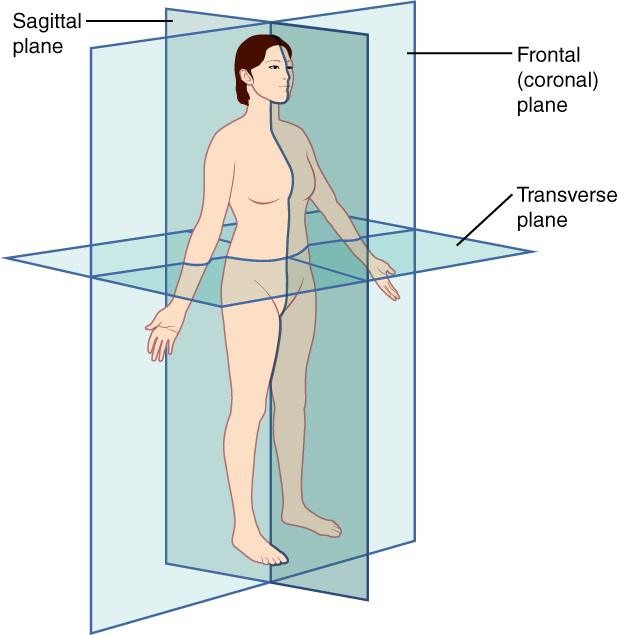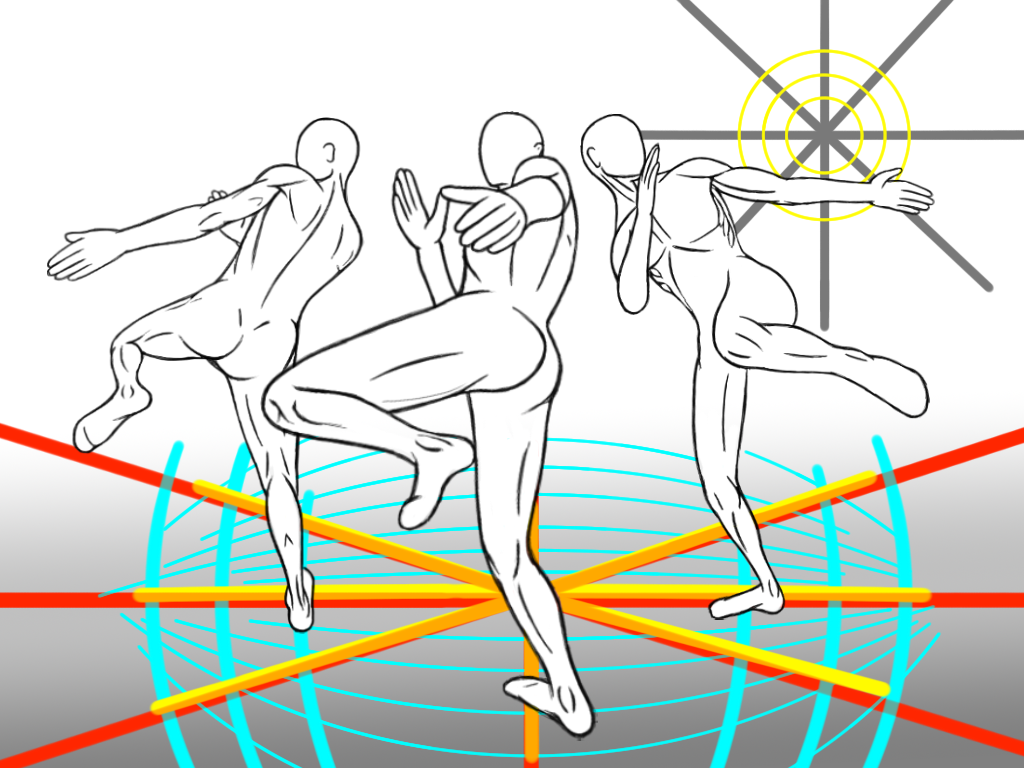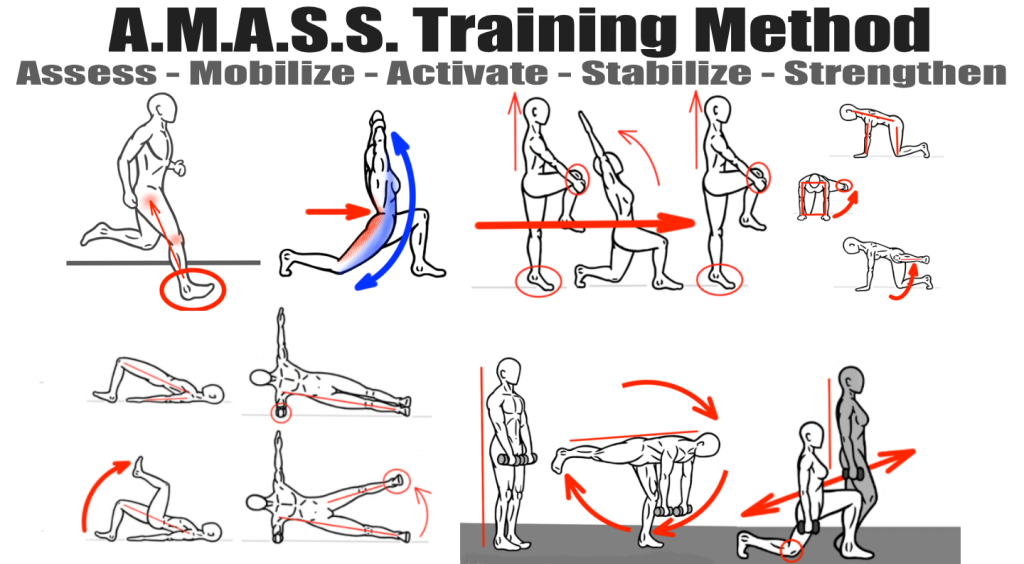In training and prehabilitation, synergistic training can be used to greatly enhance mobility, stability and strength.
Synergistic training is a training technique that intentionally blends various training modes with a diverse exercise selection in order to create a holistic and balanced structure of training stimuli (training stress) that will maximize gains in strength, reduce the risk of injuries, and improve performance.
What is Synergy?
Simply speaking, synergy is the occurrence of the whole being more than they sum of the parts. Another way to look at synergy is an act of effective cooperation verse independent or isolated actions as captured in the saying, ‘two heads are better than one.’
From a technical aspect, synergy is the mathematical/mechanical concept that describes how segments (individual parts) work together to produce a higher magnitude (value) than all of the segments (parts) working independently at full capacity. In other words, synergy is the act of individual parts complimenting one another and creating better results, such as more stability and force output in movement, together than they could while working independently (and at full capacity).
The movie Miracle uses the 1980 USA Hockey team as a perfect illustration of synergy at work. Herb Brooks, the head coach of this Olympic team, chose players for his squad that had talents/skills that complimented each other. The result was a harmony in performance that allowed the underdog American team to beat the heavily favorite USSR Olympic Team and go on to win the gold medal.
The ‘secret’ to the success of Synergist Training lies in how exercises and training techniques complement one another to lead to improved movement quality, which will positively affect any performance.
• Synergistic Training prevents imbalances (strength, energetic, postural), which leads to improved movement.
• Synergistic Training is an evolution of the premise behind Cross-Training, which sought to create better performance in one modality, such as a specific sport, by using a variety of training modes to improve the body’s total peak capacity.
• PreHab, as injury prevention and performance enhancement should take Synergistic Training a step further by balancing out specific joint actions as well as movement patterns and training modalities/applications.
Opposition to Bad Movement
Synergistic Training will improve movement quality by intentionally eliminating strength and postural imbalances. This training technique uses a wide assortment of exercises which forces the joints to work in a larger variety of directions. This reduces the effect of repetitive movements that can lead to both strength imbalances and postural dysfunctions in the body. In short, when the body moves through a diverse selection of Movement Patterns, the risk of overuse injury (due to repetitive movements) is lessened.
Using a variety of Movement Patterns in a training program helps to reduce the effects of repetitive movements and eliminate the risk of injury.
Restoring Mobility and Stability
Employing various Movement Patterns throughout training will ultimately lead to improvements in both Mobility and Stability, which positively affect movement quality and performance. Planned diversity in Movement Patterns will help restore a functional level of balance to the joints in terms of strength and Range of Motion. Without an adequate strength balance or sufficient Range of Motion, the mechanoreceptors (nerve sensors) around individual joints send messages to the Central Nervous System to change or alter Movement Patterns through that joint. The end result is a newly formed pattern of compensation, which also redirects an inappropriate amount of stress to adjacent joint components.
An example of this is the Upper Cross Syndrome, a strength and postural imbalance of the shoulders and Thoracic Spine. This syndrome is characterized with weakness in the Lower and Mid-Trapezius, Rhomboids, Serratus Anterior and the Rotator Cuff Muscles. As a result, the Upper Trapezius, Pectorals and Deltoid muscles ‘take over’ and attempt to stabilize the Humerus (arm) in the shoulder socket as a pattern of compensation. This pattern of compensation will only worsen over time as the ‘weakened’ muscles never get a chance to perform their biomechanical duties and lose the opportunity to strengthen themselves.
Imagine courtesy of wwww.jandaapproach.com
The solution to the Upper Cross Syndrome and to eliminating the rounded shoulder alignment includes a battery of exercises that lengthen the tight and overused muscles (Upper Trapezius, Deltoids and Pectorals) while intentionally positioning the body in new exercises that activate and strengthen the Rhomboids, Rotator Cuff, Serratus Anterior and Lower/Mid Trapezius muscles. Once these ‘weakened’ muscles are strengthened, the mechanoreceptors (nerve sensors) around and throughout the shoulder complexes will communicate a higher ‘confidence’ in movement that allow the arm and shoulder to move through a larger Range of Motion.
Synergistic Training aims to eliminate strength imbalances among reciprocal muscle groups and mobility limitations (flexibility, Range of Motion and arthrokinetics) of the joints.
Reciprocal Muscle Groups
‘Force Couple’ Relationships is a concept that the National Academy of Sports Medicine uses to help explain the reciprocal nature of muscle groups. Essentially, a force couple relationship is the synergistic (segments working in harmony) partnership of antagonist and agonist muscle groups. For example, biceps/triceps are an agonist/antagonist relationship as they both create movement within the same Movement Pattern, but in opposite directions.
Reciprocal Muscle Groups are muscles that produce motion in the same Movement Pattern – but in opposite directions.
Courtesy of www.dailybandha.com
More Than Opposites
Many people already understand the reciprocal nature of movement and the antagonist-agonist pairing of muscles. However, there are other muscles involved in these ‘force couples’ that have a large impact over movement quality and performance. Stabilizers and Synergist muscles groups also affect how movement is produced.
Compensation in Movement
Stabilizers are muscles that actively keep joint mechanics within the biomechanical ‘line of action’, or the direction force travels through the joint and soft tissue to create movement. When Stabilizers are disrupted – either tight, weak, or unresponsive – the line of action through the joint is jeopardized and joint integrity is compromised. The end result is a pattern of compensation in movement which places an inappropriate amount of stress on various joint components such as the joint capsule, ligaments, or bones. Additionally, it incorrectly redirects force through the soft tissue, which can cause strain or trauma in the tissue, including micro-tears, adhesions, and knots.
When the biomechanical ‘line of action’ through a joint is altered, a resulting pattern of compensation is made in the overall movement.
Courtesy of www.oregonexercisetherapy.com
Compensation Snowball
The more a pattern of compensation is repeated, the larger the affect this alteration has over the entire body. The mechanical force of a Movement Pattern shifts the stress onto structures (joints, bones, and soft tissue) that were not designed to manage those forces or level of stress effectively. These structures subsequently become over-worked and too weak to properly perform their designated biomechanical function, ultimately creating another pattern of compensation. Essentially, the compensation snowball grows larger.
Example: A long distance runner who has a restricted Range of Motion in Hip Extension due to tight Hip Flexors and weakened Glutes may start to compensate during his runs by attempting (subconsciously) to extend further and more forcefully with his ankle in Plantar Flexion. The end result over time is overdeveloped Gastrocnemius and Soleus (Calf) muscles that grow tight and short with reserved tension in the tissue. These muscles ultimately pull too forcefully and too often on the Achilles Tendon, which can possibly lead to Achilles Tendonitis, Achilles Tendinopathy or even an Achilles tear or rupture.
A pattern of compensation, no matter the size or magnitude, is dangerous because it will lead to more patterns of compensation throughout the body.
A Practice of Prevention
Synergistic Training is a training technique that offers assistance in the prevention of compensation in movement. Throughout the course of a training program and individual sessions, the body practices a combination of several different Movement Patterns (exercises) that offer diversity in the training stimuli to ultimately help balance the Biomechanical functions of the body.
Synergistic Training promotes biomechanical integrity at the joints and develops an equal strength balance in ‘force-couple relationships’ or reciprocal muscle groups as a way to prevent compensation patterns in movement.
Here is an example of a Synergistic Training session:
Warm-Up: Front Plank/Side Plank/Superman (Prone Extension) Holds
2 Rounds – 30 Seconds Each
Form Running Drills: Forward Run, Backwards Run, Lateral Shuffle
Distance 50-100 yards each
Mobility Circuit:
Hip Matrix – Kneeling Lunge in 3 Positions (Sagittal, Diagonal, Lateral)
Kickstand with Contralateral and Ipsilateral Reach
Down Dog Progression – Foot Pedal, Hip Extension, Ankle Touch
Prone Calf Stretch – Ankle Dorsiflexion combined with Rainbow Technique
Quadruped – Cat/Cow
Quadruped – Rotated Reach for Thoracic Spine Mobility
Side Lying Arm Circles for Shoulder and Thoracic Spine Mobility
Activation Circuit:
Toe Touches for Abdominal Activation
Bridge March for Hip Activation
Bird Dogs for Hip, Shoulders and Core Activation
Push/Pull for Rotator Cuff Activation
Single-Leg Toe Touch for Posterior Chain Activation
Caterpillar March for Anterior Chain Activation
Box Hop for Foot and Ankle Activation
Stability Circuit:
Chop/Lift Combo for Core-Shoulder-Hip Integration
Single-Leg Rotation on Unstable Surface for Foot-Ankle-Hip Stability
Hanging Knee Tucks – Slow Eccentrics for Core Stability
Single-Leg Squat to Bench for Hip-Ankle Stability
Isometric Y-T-W-A’s for Shoulder Stability
Pallof Press for Core-Shoulder Stability
Strength Circuit:
Front Squat Progression (Squat)
Pull-up Progression (Vertical Pull)
Single-Leg Deadlift (Hip Hinge)
Unilateral DB Press (Horizontal Push)
Unilateral DB Row (Horizontal Pull)
Transverse Med Ball Throw (Rotation)
Dips (Vertical Push)
Jog – 20 Minutes (Gait)
Sun Salutations (Bend)
Analysis: Training Session
In the above Synergistic Training session, many different Movement Patterns are incorporated as well as a variation in training modes/applications. Mobility, Activation, Stability, and Strength are all utilized in the session, as are the major patterns of Push, Pull, Hinge, Squat and Rotate. Variety and diversity in movement are key to this training technique.
Diversity in Movement helps to eliminate strength imbalances and joint deficiencies that lead to patterns of compensation and injury. It is nearly impossible to develop strength or postural imbalances if the training stimuli is balanced, which ultimately leads to improved biomechanics and more efficiency in Movement Patterns.
Team Effort
Synergy provides an organization or system with the ability to achieve more with the same effort. A perfect example of this synergistic effect occurs in our shoulders. According to NASM, Rotator Cuff muscles will become 24% more active when core musculature and the scapulothoracic (Scapula-to-Thorax) stabilizers are engaged during a global movement, such as a bench press.
The concept of synergy is parallel to the premise expressed in the T.E.A.M. acronym:
Together
Everyone
Achieves
More
Translated to Human Movement, this T.E.A.M synergy provides an athlete with more strength, power, speed and quickness as well as improved coordination, balance and endurance.
Synergistic Training Defined
There is no simple way to describe synergistic training because it varies so much in form and context. Synergistic training for a cyclist looks different than synergistic training for a runner or a CrossFitter, Powerlifter, football player or MMA athlete. Each sport has different predominant movement shapes, training intensities, and specialized functions, and therefore a different looking training program.
For example, cyclists are never on their feet, consequently they need to incorporate a good amount of proprioception work for the foot, ankle and hip. Conversely, football players are always on their feet, meaning their workouts need to practice ‘getting off their feet’ and repairing the soft tissue of their feet, ankles, and calves within the scope of their training.
Synergistic Training is based on the principle that pluralism (diversity) in training (movement) leads to better performance due to improved movement quality, which is the same premise behind cross-training and other training techniques. The easiest way to define and also practice synergistic training is by understanding the founding principles as well as the history from which Synergistic Training emerged: Cross Training.
Evolution of Cross Training
During the late stages of the 20th century, a trend in fitness called cross-training emerged because the specialization (one-dimensional nature) of training was failing to produce consistent results for participants. Cross-training was a popularized attempt to ‘redirect’ the focus of training to get better results and improved performance. Other training methods attempted the same thing, but cross-training grew rather popular and developed a sizable following.
The basic concept of cross-training was to combine weights (strength training) with cardio exercises (aerobic training) – and vice versa. Then flexibility and mobility were added to the mix. Soon after, cross-training expanded to include power training and muscular endurance. A little later, Functional training added balance and coordination (proprioception activation) to cross training. Then in the early 2000’s, CrossFit emerged and this brand of fitness took cross-training a step further by adding ‘skill’ to the previously mentioned aspects. It then changed functional training to ‘functional fitness’ – and later changed again to ‘elite fitness.’
Essentially, cross-training is the process of including a modularity of exercise that balance out (counter balance) the effects of a training program. For example, runners started to lift weight to counter the effects of repetitive stress on the body. Then Flexibility programs were provided to athletes who trained too much with weights and lost Range of Motion. Functional training helped athletes regain coordination lost when strength training on machines and in isolated movements.
Eventually, PreHab was introduced into the evolution of training as an answer for the loss of biomechanical integrity that comes with compensatory movement patterns under high intensities, which is the mixture of high loads and high speeds.
PreHab’s Role
PreHab is an extension of the school of thought that created cross training: Use training methods to improve Movement Quality and thus also improve performance. The ultimate objective/intention of every PreHab exercise or program is to optimize performance by restoring biomechanical integrity of the joints and increasing efficiency in movement patterns. Before a person can effectively start doing PreHab, it needs to be understood how she is losing biomechanical integrity and efficiency in her movement/performance.
Training Dilemma
Many times, athletes do not even know what they are doing wrong or better put, they do not realize what their bodies are doing incorrectly. Additionally, many times ‘wrong movement’ feels right because it is more ‘familiar.’
If an athlete has been moving with deficiencies in his or her biomechanics for a long time, he or she has grown accustomed to that movement. These deficiencies and dysfunctions feel ‘natural’ because the athlete has been using them for so long. On top of that, these deficiencies have become so engrained as movement habits that the athlete’s body will automatically use the ‘wrong’ movement as its default movement habit.
In other words, many athletes do not know what PreHab exercises they need to practice because they do not realize what dysfunctions and deficiencies they are incorporating into their movement.
Answer: Synergistic Training
As previously mentioned, athletes face a dilemma in training. It is difficult for an athlete to independently assess and evaluate his or her own movement quality, which then makes programming for training and PreHab in turn more difficult. Of course, the simplest answer is to find a qualified coach or trainer to evaluate the athlete’s movement and create a training and PreHab program in order to improve movement quality. However, not every athlete has the means to interact with skilled coaches or trainers. So, the next best option is to take on Synergistic Training and perform an array of self-evaluations.
Recommendation for Athletes: Start filming all self-evaluations or movement assessments as well as specific workouts or exercises that can be used as a visual metric (measuring device) for improvement.
Building a Synergistic Training Program
Diversity is a key component to any Synergistic Training Program. For a Synergistic Training Program to be effective, there needs to be certain level of variety or difference in movements in training in regard to Movement Patterns, Intensity and Training Volume.
Synergistic Training Variants
• Movement Patterns
• Training Mode
• Training Application
Movement Patterns: Form and Direction
Human Movement is made of Movement Patterns with specific shapes (form) and direction. For example, proper squatting has a specific shape to the exercise; hips must be below the height of the knees and the spine should be straight or neutral. On the other hand, running has a very different shape; running is upright, long, and very rotational from head to toe.
Movement Patterns Defined:
A Movement Pattern is a series of consecutive positions with distinct beginning and end positions that serve to complete a specific task.
Shape Matters
The shape or form of the exercise determines its function. This is very evident in throwing, wherein the shape of the throw (form of the Movement Pattern) determines exactly where the ball will travel. The same goes for swinging; the shape of the swing determines exactly where the ball travels – barring all air resistance of the wind.
Shaping Our Bodies
Every rep of every exercise follows a particular Movement Pattern. This commands the way the body adapts and changes throughout the course of a training program as outlined in the S.A.I.D. Principle in training. For example, runners get strong and/or tight in their posterior chain due to the Movement Pattern of running, while boxers grow strong and/or tight in their shoulders and chest because of the Movement Patterns used in boxing.
Counter Movements
Synergistic Training attempts to create balance in the body through the use of ‘counter movements’ or reciprocal Movement Patterns. For example, adding a Bent-Over Row as a reciprocal or ‘counter movement’ or reciprocal Movement Pattern to the Bench Press is one of many Push/Pull combos found in Synergistic Training.
Opposite Direction
In its simplest form, a Counter Movement is performing the same Movement Pattern in the opposite direction. For example, running backwards is a Counter Movement for running forwards, just as a Bent Over Row is a Counter Movement for a Bench Press. These types of Counter Movement exercises have grow very popular in part to the popularity of Cross-Training and Functional Training.
Reversing the direction of force in a Movement Pattern is a form of Counter Movement, which is the premise of Push/Pull programming.
Advanced Counter Movements
Push/Pull combinations can be effective in an athlete’s attempt to ‘balance’ out his or her movements and biomechanics, especially if the athlete came from training/lifestyle filled with Repetitive Movements. It’s a start, and a very good start for any athlete. However, the positive effective of just ‘reversing the force’ of a given Movement Pattern will diminish over time. In other words, advanced athletes will not get the same benefit from a Push/Pull routine as would an athlete who is new to Synergistic Training.
Advanced athletes need to diversify their Counter Movements as well.
An advanced athlete who trains/competes at a high intensity experiences some degree of compensation in his or her movement. Compensation is inherent in any training program that applies the Principles of Progression and Overload. However, compensation is not inevitable if it is effectively buffered with Synergistic Training, more specifically, an effective array of Counter Movement, Movement Evaluations, and PreHab exercises.
Target Joint Actions
The advanced athlete needs to include a relatively even balance of Joint Actions and Movement Patterns, as opposed to just Movement Patterns. Push/Pull combos will not effectively address biomechanical dysfunctions or inefficient neuromuscular firing patterns that are occurring in either stabilizers or synergists (muscles). Instead, the advanced athlete should strengthen and condition the major joints in each direction or joint action.
Courtesy of www.acefitness.org
Major Joint Actions-
• Shoulders: Flexion/Extension, Adduction/Abduction and Internal/External Rotation
• Spine: Flexion/Extension (Anti-Flexion/Anti-Extension), Lateral Flexion (Anti-Lateral Flexion) and Rotation (Anti-Rotation)
• Hips: Flexion/ Extension, Adduction/Abduction and Internal/External Rotation
• Ankle/Foot: Plantar Flexion/Dorsiflexion and Inversion/Eversion
The sum of possible movements used in a training program grows exponentially once each of the Joint Actions are intentionally targeted. However, the objective of targeting Joint Action is not to increase the number of exercises in a program. The target is to strengthen the biomechanical function of each joint and thus improve the overall quality of every single Movement Pattern.
Patience Required
Once Joint Actions are targeted in a training program, a few ‘managerial’ issues may arise. An athlete may feel as if he or she is ‘losing’ strength because he or she cannot perform a particular Push or Pull exercise with the same amount of weight once Abduction or Adduction is changed. For example, athletes may not be able to press as much weight in a Sagittal (Narrow Grip) Bench Press as they did in a Transverse (Wide Grip) Bench Press. This is common and is more of a sign for the need of Synergistic Training than a reason to stop.
Have patience when incorporating new variations of exercises into a training program to target the major Joint Actions. Allow time (4-8 weeks) for the neuromuscular system to create positive strength and conditioning adaptions in these new Movement Patterns.
Creativity Helps
Additionally, it helps to have a certain level of creativity when it comes to adding Joint Actions into the design of a training program. The total number of Movement Patterns within Human Movement is nearly infinite. The shoulder is capable of 16,000 different positions and the foot is capable of 33,000 different positions. If you match up all the shoulder positions with the different foot positions, (mathematically: 16,000 x 33,000 = 528 million variations), there are way too many positions to train!
Within a Synergistic Training program, an athlete should train in as many different positions as possible without interfering with the other aspects of the training program, such as periodization goals, race deadlines, and Corrective Exercises.
For instance, a Speed and Agility program for soccer can be Synergistic if it incorporates several different ‘Push’ exercises into the program design. However, these ‘Push’ exercises may consume valuable training time that could be used to practice specific speed and agility drills. Therefore, eliminating some of the ‘Push’ exercises may be necessary in order to hit the training program’s scheduled goal of improving speed and agility by the start of the soccer season.
Plan Ahead
Design a Synergistic Training program with as much diversity in Exercise Selection and Movement Patterns as possible while still honoring specific training objectives, including strength/power gains, aerobic/endurance conditioning and skill building.
Account for Lifestyle Factors
One of the most important factors a coach or trainer needs to consider when designing a training program is ‘Lifestyle Factors’ or Daily Life Activities. How does the athlete spend the majority of his or her day? Is it sitting, standing, walking, or lifting things? It’s important to know! Every person’s ‘lifestyle’ is full of repetitive movements that greatly re-mold his or her body (biomechanics) and re-shapes Movement Patterns.
A Synergistic Training program should include ‘Counter Movement’ exercises to balance out the effect an athlete’s lifestyle has over his or her body.
Sitting
The habitual act of sitting has a tremendous effect on the body as the direction (the way one sits, i.e. Sitting posture) of sitting can and will reshape the body over time. All those hours spent sitting causes the body to make tight hip flexors, weak glutes and flat feet the norm. So, the first step of any synergistic training program is to undo all those hours of sitting by being more active throughout the day and practicing specific PreHab exercises for hips, ankle and core.
Tools to Improve Training
Here are a few simple training tools or concepts to improve the ‘synergy’ of a training program or workout.
• Pattern Programing: Training in the Planes of Movement & Major Movement Patterns
• Cycling the Training Mode and Application
Organizing a training program to have more of a balance within each of these concepts enhances the overall synergy of any training program. Note: there does not need to be complete balance within each concept. For instance, an Olympic Weightlifter does not need to end every training session with low-intensity aerobic work. However, the Olympic Weightlifter still benefits from low-intensity aerobic work as this mode of training develops a higher aerobic base and contributes to faster recovery between lifts and between training sessions.
Every training program can and will benefit from all attempts to balance out Movement Patterns and Training Intensities.
Pattern Programing: The Planes of Movement & Major Movement Patterns
Many minds, from Leonardo da Vinci to Dan John, have pondered ways to classify Human Movement. From all this analysis and pondering (and debate) come two prevailing concepts to classify Human Movement in terms of spatial quality (Movement Patterns). These are the Three Planes of Movement concept and the Major Movement Pattern concept, although the categories the later is still debated by many. Nonetheless, these ‘tools’ still help any coach or athlete organize their training program and incorporate a diverse selection or synergy of movement patterns.
The Three Planes of Movement are imaginary axis points that run through the body in a cardinal cross and classify movement in regard to direction.
• Sagittal Plane: Moving forwards or backwards.
• Frontal Plane: Moving laterally or side to side.
• Transverse Plane: Rotational or horizontal front to back movements.
Synergistic Training attempts to evenly distribute Movement Patterns (exercises) among the three Planes of Movement as much as possible.
Multi-Planar
Technically, every movement occurs simultaneously in all three planes of movement, even if it is only a subtle movement or no movement at all, but just a ‘firing sequence’ wherein a muscle is activated and engaged in an isometric contraction while a movement is performed.
Example
The Pallof Press is a great example of how each plane of movement is incorporated into the movement and can even be objectively emphasized without creating actual motion.
In the Pallof Press, the Core, Shoulders, and Hips synergistically work against the rotational pull of the cable intentionally set up on an adjacent angle to cause rotation. The movement looks ‘Sagittal’ dominant because the most visible movement is the arms pressing forward and retracting backwards.
Plane Dominance
Even though every movement is truly Multi-planar, each Movement Pattern occurs mainly in one of the three Planes of Movement, providing a ‘Plane Dominance.’ For example, when a person is running, biomechanical actions occur simultaneously in every Plane of Movement. However, the largest sum of movements all occur in the Sagittal Plane, which is highlighted as a locomotion (transitional) movement forward. Therefore, running is categorized as a Sagittal movement.
Note: A majority of movements in sports or exercise are primarily Sagittal Dominant; this indicates that most training programs are lacking movements within the Frontal and Transverse Planes of Movement.
Multi-Directional Exercises
One of the simplest ways to balance out the Planes of Movement is by incorporating Multi-Directional Exercises into the training. A perfect example of a Multi-Directional Exercise is the Multi-Directional Lunge, also referred to as the Lunge Matrix, a continuous cycle from Forward Lunge to Diagonal Lunge to Lateral Lunge to Reverse Diagonal Lunge to Reverse Lunge to Curtsy Lunge. The Multi-Directional Lunge moves through all three Planes of Movement and also ‘hits’ all of the following joint actions: Hip Flexion, Hip Abduction, Hip External Rotation, Hip Extension and Hip Adduction.
Some disciplines of Kung Fu use the ‘Rice Pattern’ to incorporate more synergy into their training program. The Rice Pattern technique is the practice of performing the same move, punch, kick, block or combination, in all eight cardinal directions, which are analogous to the direction on a compass: North, Northeast, East, Southeast, South, Southwest, West and Northwest.
Major Movement Patterns
Many coaches and trainers have categorized all Human Movement into a few specific Movement Pattern categories, or Primal/Primitive Movements. That being said, there is much debate over the specifics of these categories; many experts claim there are 6-8 categories while others proclaim many more. Nonetheless, the overall consensus is that Human Movement can be quantified, categorized or tracked, which ultimately makes the task of balancing out a training program easier to do.
The Major Movement Patterns include:
• Squat
• Push
• Pull
• Rotate (Twist)
• Lunge
• Hip Hinge
• Bend
• Carry
• Crawl
• Stabilize
• Throw
• Gait (Stride)
*Please note: there is much friendly debate among experts as to which of these movements are truly Primal/Primitive Movements or a Major Movement Pattern.
Pattern Programing
Many contemporary training programs attempt to use at least one exercise or combination of exercises to include each of these Primal/Primitive Movement Patterns in order that the program be more balanced and synergistic.
See the example workout above for a sample of Pattern Programming.
This type of Pattern Programming is a basic form of Synergistic Training as it eliminates overuse injuries and compensation patterns due to the reduction of repetitive movements. Furthermore, Pattern Programming improves movement quality and performance as well as challenges the body’s neuromuscular coordination and overall mobility on a regular basis. However, Pattern Programming alone is not truly ‘holistic’ or Synergistic.
Training Mode and Application
Many people diversify their exercise selections and their Movement Patterns while overlooking variety in their training modes and applications, which is an essential component within Synergistic Training.
• Training Mode – refers to the type of exercise and equipment used, such as free weight exercises vs body weight exercises or running vs swimming. Each mode offers a completely different training stimulus.
• Training Application – refers to the type of effort used in training, such as Long Slow Distance (LSD – Endurance) Training vs. High Intensity Interval Training (HIIT – Anabolic Power). Each type of training application offers a different kind of adaptation in the body and thus guides training in a specified direction.
Both Training Mode and Application need variance in order to create more balance in overall ability.
Training Mode
If an athlete always trains with free weights, he or she can lose a level kinetic-sense that helps with body control. Conversely, an athlete always training with body weight exercises does not have the opportunity to create the same type of neuromuscular recruitment and ‘rate coding’ that is derived from training with free weights.
At the same time, a swimmer who does not participate in ‘dry land’ training loses the ability to activate many proprioceptors that stabilize the body as well as coordinate posture, movement, and even power. Additionally, a runner who never squats, lunges, or practices ‘sitting’ on the floor will surely lose mobility and Range of Motion throughout the hips and legs resulting in a negative effect on his or her stride over the course of training.
Synergistic Training intentionally varies the training mode in order to challenge the athlete’s body with a changing and diverse range of training stimuli.
The changes in training mode do not need to be dramatic, but they do need to be progressive. A common example of incorporating diverse training stimuli through various training modes is seen in athletes, such as football players, who practice yoga, ballet or Pilates in addition to their regular strength training and practice.
Training Application
The term, as well as the concept of ”training application” can be easily misunderstood. What it really refers to is the way the body uses the neuromuscular system and energy pathways, which are a complex organization of muscle fiber type, energy systems, and fuel economy. In other words, training application refers to the type of effort the body uses in a given movement.
For example, Sprinters primarily use Fast Twitch muscles fibers and the Phosphagen energy pathway in a 100-meter race, which typically lasts under 15 seconds. Marathoners, on the other hand, primarily use their Slow Twitch muscles fibers and Oxidative (Aerobic) energy pathway.
Training Applications refer to the type training an individual participates in based on Muscle Fiber Type and Energy Pathway utilization. Simply put, ‘Training Application’ can be quantified by the questions:
• ‘What are you training? Strength, Power, Muscular Endurance, Aerobic Endurance or Active Recovery’
• ‘What Energy system are you training in? Phosphagen (Power/Strength), Glycolytic or Anaerobic (Muscular Endurance), Oxidative (Aerobic Endurance) or Oxidative Recovery, which is sometimes referred to as ‘flushing the system’ (Active Recovery).
Importance of Changing Training Applications
The Human Body is truly a ‘holistic’ system, meaning that every part or every system within the human body can and does affect every other part or system in the body. Nothing, not one single cell, exists independently in the human body. This interrelated or interdependent design of the human body becomes an asset when training the various energy pathways and muscle fiber types in the body for several reasons.
Aerobic Activity Helps Recovery
When an athlete trains in the Anaerobic Energy System (Muscular Endurance) there is a build up of Lactate (metabolic waste) that causes a muscle to fatigue (tire out). Aerobic activity, such as light jogging or cycling on a stationary bike, can act at Active Recovery and help the body ‘flush out the metabolic waste’ or clear out the Lactate from the muscles, which allows for more muscle contractions of a relative high intensity. Essentially, this technique of flushing out the system helps athletes, such as football or basketball players, recover faster during training, practice, or competition to continue playing in the game.
Aerobic Activity helps to flush the system and induces faster recovery.
Build an Aerobic Base
More importantly, practicing Active Recovery on a habitual basis throughout training increases an athlete’s Aerobic Base (level of aerobic conditioning), which lets the body clear out metabolic waste faster from intense exercise or activity. A higher aerobic base allows athletes recover faster and return to high intensity work, such as sprinting, speed work, and agility drills, which use the application of Strength, Power, and Muscular Endurance.
Increasing an athlete’s Aerobic Base (Aerobic Conditioning) allows athletes to engage in more rounds (sets and reps) of explosive power, strength, or muscular endurance activities.
Strength Assists Long Slow Distance
On the opposite side of the spectrum, strength and power training allow athletes to perform better in Long Slow Distance (LSD) or aerobic activities such as marathon running or swimming. Both strength training and power exercises increase total force output, which leads to better mechanics, i.e. stride or stroke mechanics. This increase in movement efficiency has a positive effect on overall performance as the marginal improvements add up to significant amounts over a longer period of time.
Strength and Power training improve movement efficiency as well as performance in aerobic or Long Slow Distance activities.
Strengthen to Protect
Additionally, strength training and power exercises build up a greater resistance to stress, reducing the negative impact of repetitive movement and over-use injuries. Strength training fortifies soft tissue density and increases neuromuscular (muscle fiber) recruitment; both dilute (lessen) the physiological strain that occurs in a training session/program. Plus, strength training can improve mobility and Range of Motion of the joints when performed properly.
Use Strength Training to reduce the negative impact of repetitive movements during the course of training.
Dangers of Concurrent Training
Concurrent Training is a term that refers to process of using multiple training modes and applications within a training program. In other words, it means training different modes/applications at the same time.
Concurrent Training becomes dangerous when the physiological adaptions from training are contradictory to the training goals and objectives for a given sport. More specifically, training too much at either end of the energy pathway spectrum lessens the effectiveness of the other side, i.e. training too much in Aerobic Endurance lessens the physiological capacity for power and vice versa. In other words, the danger of Concurrent Training is the possibility of ‘spreading one’s self too thin.’
To clarify, Concurrent Training is only dangerous to specific training goals when there is ‘too much’ training performed in different training modes or application. Concurrent Training is not dangerous when practiced in appropriate amounts, but is dangerous when practiced with disproportionate percentages of focus.
For example, Powerlifters will not peak in their lifts if a large percentage (even a large minority of time 20%+) of their training is aerobic. However, Powerlifters can and will benefit from some aerobic work within their training cycle/program. Conversely, marathoners will lower their overall speed and increase their race time if they spent too much time in Anaerobic or Phosphagen (Power or Muscular Endurance) activity and not enough time improving their Aerobic Conditioning.
Concurrent Training (Synergistic Training) needs to be practiced with an appropriate amount of diversity to allow for optimal stimulus of the entire body without compromising any performance or training goals.
Calculating Variety in Synergistic Training
As previous mentioned, an inappropriate split among training mode/application, as well as Movement Pattern programming (Exercise Selection), can compromise performance and training goals, which is not ideal. Furthermore, there are many different factors to consider when planning Concurrent and Synergistic Training programs. In fact, the total amount of information could easily fill a large textbook, if not an encyclopedia. However, there is a basic concept to provide guidance while more knowledge and specifics are gathered; this concept is Prato’s Law, or the 80/20 Rule.
Tim Ferriss, author of The Four Hour Body and other books, advocates the use of the 80/20 Rule as the basis for assessing and understanding how to maximize results of productivity across several different disciplines, from nutrition to strength training to even business strategies.
80/20
Simply put, Prato’s Law (80/20 Rule) states that the amount of results is inversely related to amount of effort. More specifically, this premise declares 80/20 as the baseline measure in which 80% of any result (increase in strength, profit, etc.) will come from 20% of the effort. An increase in effort only leads to a decrease (in percentage only) in results. In other words, our results diminish in size and percentage as our efforts increase – this is commonly referred to as the Law of Diminishing Results.
For example, a Powerlifter who designs his training program to engage the Aerobic Energy System in 20% of the training time, will maximize positive results from that system. However, if the Powerlifter increases the Aerobic Training to 30% of the program, he will only generate 70% return from this effort, which may include a loss of total body strength and a drop in performance.
Conjugate Programs
Conjugate Training Programs and Periodized Conjugated Programs are examples of training programs that create various kinds of synergy for the athlete or individual. A Conjugate Training Program will diversify the modes and application of training throughout the program to help the athlete recovery fully from previous workouts or training session. A library of Auxiliary or Accessory Exercises can be used to help the athlete maintain a balance among Movement Patterns as well as to address any weakness or dysfunctions that may corrupt or threaten Biomechanics Integrity and Movement Quality. Additionally, Conjugate Programs will alternate between ‘Absolute Strength’ and/or ‘Dynamic Strength’ sessions.
Absolute Strength – Training sessions that seek to increase maximal force output within one specified Movement Patterns, such as the Squat or Deadlift, in which the load or resistance is constant.
Dynamic Strength – Training sessions that utilize various training tools such as Resistance Bands or Chains to create variance or a changing amount of resistance through a specified Movement Pattern.
Alternating between Absolute Strength and Dynamic Strength exercises will train the neuromuscular system to become more specified and adaptive in its firing sequence, thus accelerating Motor Learning and increasing the Rate Coding effect of a given exercise.
Additionally, Conjugate Training Programs are not all about strength gains. These programs will also incorporate both mobility and corrective exercises as well as maintaining a variance in training the Energy Systems of the body, i.e. Phosogen, Glycolytic and Aerobic energy pathways.
Note: Aerobic Training in the case of this Powerlifter can include the amount of time in Excess Post-Exercise Oxygen Consumption (EPOC), in which the athlete experiences a high ventilation rate after a series of heavy lifts to account for most of his time in his Aerobic zone, and may only participate in ‘light cardio’ work once a week.
Simple Guidance: Program Evaluation
As practice, look at a specific training program, from past or present, and analyze the diversity of that program. Calculate the amount of training that took place in the three different energy systems as well as the amount of training that took place within various modes and Movement Patterns.
Gauge the diversity of a recent training program in regards to Training Mode, Training Application and Movement Patterns.
Example analysis of a Speed and Agility Program:
A Periodized Training Program with Linear Progressions that is divided in 4-Day Training Cycle in order to target Linear Speed, Lateral Speed, Quickness and Change of Direction.
Training Mode
PreHab – including Soft Tissue Therapy, Floor Activation and Stability Exercises
Field Conditioning – including Form Running, Dynamic Stretching, Quickness Exercises, Speed and Agility Drills
Strength Training – including free weights (dumbbells, barbells and more), body weight, elastic resistance (resistance bands and tubes)
Training Application
Strength Training and Speed & Agility Drills (Phosphagen)
Activation and Stability exercises, bodyweight exercises, some Strength Training and Speed & Agility Drills (Anaerobic Muscular Endurance)
Dynamic Stretching, Form Running, Soft Tissue Therapy and some Quickness and Conditioning exercises (Aerobic Conditioning)
Movement Patterns
Dynamic Stretching, Form Running, Activation/Stability Exercises, Strength Training, Quickness/Conditioning and PreHab/Soft Tissue Therapy (Divided among the Three Planes of Movement)
Dynamic Stretching, Form Running, Activation/Stability Exercises, Strength Training and PreHab/Soft Tissue Therapy (Divided among Major Movement Patterns
Holistic Training Programs
Ancient martial arts, such as yoga or kung fu, are usually renowned as a staple of holistic training and not just because they excel in their own form of Pattern Programing. A well-crafted yoga class, whether Vinyasa, Ashtanga, Bikram or even restorative, practices a series of poses that compliment each other in an intentional fashion. Kung Fu training not only practices a wide variety of kicks and punches, but also practices all the kicks and punches on the ‘rice pattern,’ an imaginary compass containing the eight archaic directions on the floor. Collectively, the systematic diversity of Movement Patterns in yoga and kung fu create thousands of different movement possibilities (exercises) to expand a training program. However, a ‘holistic’ or Synergistic Training Program needs to address more than just Movement Patterns.
A ‘holistic’ training program is a discipline that looks to optimize the full physical, mental, and emotional potential of an individual human being as well as his or her respective tribe or community. These ‘holistic’ traits have been emphasized as well as iconized within such disciplines as kung fu and yoga. Plenty of modern training programs are Holistic in nature in that they strive to optimize the physical, mental, emotional, and even social potential of an individual. Training programs, such as SealFit or SoliderFit, are examples of these Holistic modern training programs.
Synergistic Not Holistic
Synergistic Training is not Holistic training, even though the two may appear somewhat similar. Synergistic Training is purely focused on the physical aspects of training. This training has a spillover effect onto the other aspects of an individual’s life, i.e. emotions, mentality, attitude and confidence. However, the focus of the training is physical.
Holistic programs tend to incorporate Synergistic Training because of the spillover effect the physical training has on these various other components of an individual’s life, i.e. the way improving one’s movement quality and posture through Synergistic Training also assists in elevating one’s emotional life and/or social life and more.
Synergistic Training will benefit any Holistic program due to improved movement quality and posture.
GPP vs SPP
Synergistic Training is to be found in General Physical Preparedness (GPP) programs and Specialized Physical Preparedness – and for good reason too. First, Synergistic Training provides a direct route towards GPP, in which mobility, strength, and endurance are all adequately improved. This can lead many coaches or trainers to believe it is a prerequisite to a successful training program.
Synergistic Training is a direct means to improving GPP, which becomes a solid base for all additional training objectives and goals.
SPP, on the other hand, can also be greatly served by Synergistic Training in a more definitive context. SPP is analogous of ‘sports specific training’ or practice in sports, where an individual athlete may practice a specific Movement Pattern, such as throwing or swinging, thousands of times within the course of a week. The highly repetitive nature of SPP and sports specific training is the driving reason behind the need for Synergistic Training to be incorporated. However, Synergistic Training within a SPP program needs to be more specific in terms of risk assessment and training benefit.
For example, a pitcher in baseball would need to assess all postural changes due to throwing a ball hundreds of time in practice. Then the athlete would need to implement a combination of ‘corrective exercises,’ such as foam rolling the Latissimus Dorsi (Back) and Trapezius (Shoulder/Neck) muscles as well as stability exercises for the foot, ankle, and hip. The athlete also has to evaluate how these ‘corrective exercises’ effect his movement quality, posture and throwing mechanics because there will be a causal effect in every corrective program that can lead to other compensation patterns if not effective managed and evaluated.
Synergistic Training needs to effectively target repetitive Movement Patterns in SPP and continuously evaluate the causal effect of the program.
Putting It All Together
Due to the amount of variants within training, potentials in designing/administering a training program are unlimited. In fact, the possibilities can be overwhelming and counter-productive. Do not suffer ‘paralysis by analysis.’
Start with the ‘End in Mind’-
Know the specific goals and objectives of the training program before you start programing. For example, in a Speed and Agility program for high school athletes the training goals may be to:
• Improve athlete’s time in 40-yard dash
• Improve athlete’s time in Pro-Agility Drill
• Improve athlete’s time in T-Drill
• Reduce of Limit the number of non-contact injuries (to hips, knees and ankles)
• Achieve improvement for 75% of players from the entire team
Create a Schedule-
Know what days/times are available for training:
• How many weeks are in the Program? How long is Off-Season and Pre-Season?
• How training days per week? Is it 3, 4 or 5 days a week of training?
Choose Type of Program-
There are four main types of programming:
• Linear Progression
• Periodized Progressions
• Random/Chaos Progression
• Combination of Progressions
Choosing the type of training can be dependent on the number of days available to train each week – as well as an evaluation of the athlete’s ability level, i.e. middle school, high school, college or amateur.
Periodized and Combination Programs are best served when athletes can train 2+ days a week. Linear or Random Programming may be suitable for middle school athletes, as well as high school, college or amateur athletes who can only train 1-2 days per week.
Assess and Prioritize
Before putting pen to pad and writing out the program itself, it’s important to assess the needs of the athlete as well as the collective needs of an entire team.
For example, training a high school softball team that competes at the highest level would have specific performance needs that can be calculated, such as the time it takes to run to first or second base on a routine hit as well as the reaction time for an infielder as opposed to an outfielder.
In another example, the collective needs of a high school football team that plays a spread offense as opposed to the Wing-T or Pro-Set offense can influence the design of a training program due to the difference in speed and stamina needs in the different offenses. Additionally, using common performance metrics (evaluations) to assess the team’s collective ability at the start of the program will help guide decision-making during the program.
Test and Re-Test
For a coach and athlete to lead an effective program, the principle of testing needs to be included in the training. Test and Re-Test is a phrase repeatedly used by Kelly Starrett, physical therapist and author of Becoming a Supple Leopard, as he works with athletes on Mobility WOD and helps reveal the importance of evaluating the effects of a training program.
Performing periodic evaluations is essential to administering an effective training program.
A.M.A.S.S. Method
Since athletes and coaches cannot ‘set it and forget it’ when it comes to training, using the A.M.A.S.S. Method or another kind of system to evaluate provides a working framework to guide decision-making and adjust a training program when it is deemed ineffective. The A.M.A.S.S. Method is easy to use as the sequential steps of the method are embedded in the acronym.
Here is the A.M.A.S.S. Method for a Runner:
Step One:
Assess the athlete’s Gait/Stride (movement) and notice all dysfunctions and negative deviations in either: Alignment (form), Range of Motion and Motor Control (neuromuscular coordination).
Ex- athlete is heel-striking when running (the heel strikes the ground first and in front of the athlete’s center of mass).
Step Two:
Mobilize with a variety of exercises (soft tissue therapy, stretching, and Joint Distraction) to restore length and Range of Motion to affected areas.
Ex- athlete foam rolls Quadriceps (thigh), stretches the Hip Flexors, and performs a joint distraction exercise on hip sockets in order to restore Hip Extension to its full Range of Motion
Step Three:
Activate the weakened or underused muscles in order to fully restore the biomechanical function of a given joint.
Ex- athlete practices an array of activation exercises, such as a Single-Leg Bridge, Single-Leg Squat or Hip Thrust, to facilitate (ignite/fire up) weakened or under-active Gluteus Maximus muscles.
Step Four:
Stabilize the proper ‘Line of Action’ of a given joint and ensure all movement at that joint occurs as a result of Motor Control (neuromuscular coordination) as opposed to momentum or external forces.
Ex- athlete practices a Single-Leg squat with proper alignment and control, which means that the knee, ankle and hip all track properly through the respective ‘line of action’ and under control.
Step Five:
Strengthen weakened muscles and Motor Control (neuromuscular coordination) in regard to force output (strength/power) and duration (muscular endurance) through a progressive set and rep scheme.
Ex- athlete continuously fails to exhibit correct Motor Control in the Single-Leg Squat after a certain number of reps, which is an indication of a lack of muscular endurance. Therefore, progressively increasing the reps and sets on a corrective exercise, such as lunges, step-ups or single-leg squats, builds up this muscular endurance and maintains proper knee, ankle, and hip alignment while running.
Recap: Synergistic Training as a Framework
The purpose of ‘training’ is to improve movement quality in order to improve performance. In other words, the purpose of training is to ‘get better.’
Synergistic Training, as well as the A.M.A.S.S. Method, provide a framework or a way to guide decisions and choices throughout training in order to help an athlete ‘get better.’
At the core of Synergistic Training and the A.M.A.S.S. Training Method is the premise of improving movement quality to improve performance.
Improving Movement Quality
There are several techniques, methods, and systems that focus on movement quality. Ultimately, this is a good thing to have within the field of training because the quality of our movement, or more specifically, the operational integrity of our biomechanics, dictates the level of efficiency in any movement and has an impact on an athlete’s energy and physical resources: power, stamina, stability, mobility, coordination, and even mental focus.
No matter what system is used, in order for an athlete to optimize success and longevity in performance, biomechanical function and movement quality need to be assessed and addressed during the course of a training program. Do this and the athlete greatly increases his or her chance for success.
To learn more, read on of the following recommended articles:
Soft Tissue Therapy – Take care of what moves you!
The Art of Stretching – Be Effective when it comes to Range of Motion.
